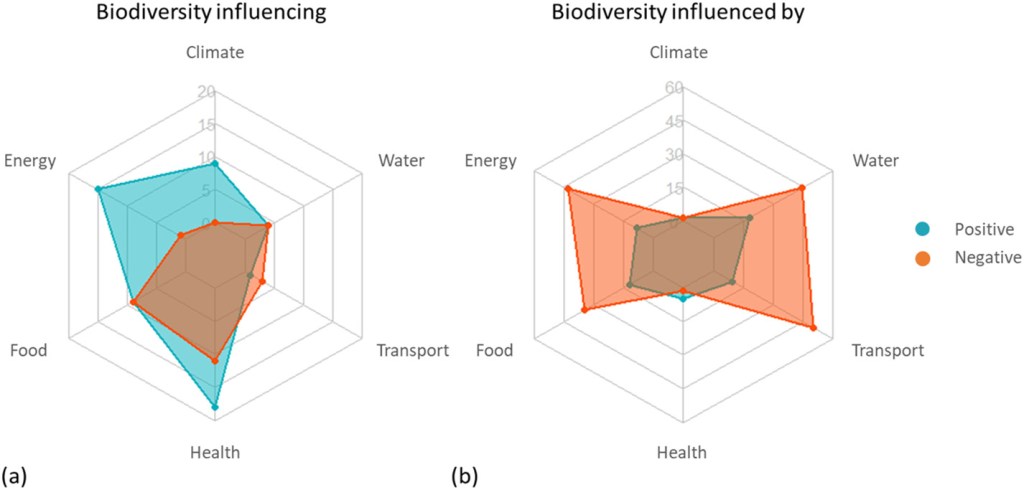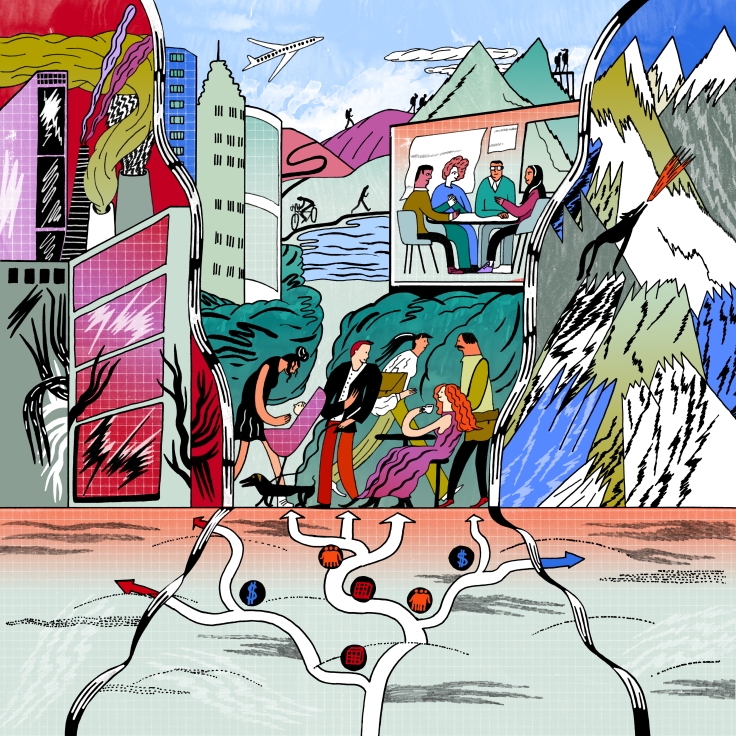This blog post summarises a recently published article Understanding the role of biodiversity in the climate, food, water, energy, transport and health nexus in Europe by Kim et al. 2024, also co-authored by the Czech Globe team represented by Romana Jungwirth Březovská, Simeon Vaňo and Alejandrina Viesca-Ramirez. This work is part of the wider activities of the BIONEXT project.
Biodiversity is critical to global ecosystems and human health. In the face of biodiversity loss, we need to understand the interactions between biodiversity and food production and consumption, water quality and availability, climate regulation and mitigation, human and ecosystem health, energy production and transportation. Such knowledge helps to develop holistic policies and actions that support synergistic outcomes across sectors and minimise trade-offs to avoid unintended consequences for nature and society.
The team of authors analysed 194 scientific studies to gather evidence and assess how biodiversity is affected by and influences the other elements that make up the so-called “biodiversity nexus,” which refers to the interactions and interdependencies between the elements. We identified 345 evidence-based linkages and assessed key negative impacts on biodiversity as well as co-benefits between biodiversity and other nexus elements.
Here we briefly summarise key findings that may be of interest to a wider audience. The images below summarise key results and influences in the biodiversity nexus. These influences or impacts are then listed in the green boxes below the images.


First, the majority of the studies reviewed highlighted the significant negative impacts on nature caused by human activities. These include:
- Land use alteration: habitat destruction for expansion of food production, competition for land from land-based renewable energy (bioenergy, solar, wind), habitat fragmentation from transport and energy infrastructure.
- Water use or water course alteration: alteration of water flows and river fragmentation due to dams and reservoirs related to hydropower, water demand for energy and irrigation reducing environmental flows, and dredging affecting coastal and marine ecosystems.
- Land degradation: agricultural intensification affecting habitat quality and species diversity and richness, peat extraction for energy, and mining for renewable energy.
- Water degradation: eutrophication, acidification, brownification and sedimentation affecting freshwater, coastal and marine ecosystems and species.
- Climate change: heat or water stress, seasonality and floods impacting species and ecosystems.
- Direct species fatalities: wind turbines and traffic (road, rail, shipping) causing direct collisions.
Second, the negative implications of biodiversity on other nexus elements included:
- Competition for land
- Disease transmission from a small set of species triggered by habitat gain or loss and climate change
- Introduction and expansion of invasive alien species.
Third, some actions can bring multiple co-benefits between biodiversity and other elements, such as:
- Biodiversity-friendly management: agro-biodiversity or agroecological practices, sustainable management of bioenergy cropping systems, integrated management of water landscapes, and management of habitats on road verges and railway embankments.
- Restoration of ecosystems: forests and peatlands for climate mitigation and biomass energy production, riparian forests for flood control, and remediation of water courses for improving water quality.
- Protection of species and ecosystems: that are key in maintaining and enhancing ecosystem services such as water filtration and water retention.
- Urban green and blue infrastructure: green roofs for improving energy performance in buildings, greening of transport infrastructure for pollution control through promotion of active transport (walking, cycling), urban green space for health benefits.
- Dietary change: moving to healthier and more sustainable diets, including reducing the consumption of meat to reduce livestock for climate mitigation.
We believe that this study represents a step forward in understanding the links in the biodiversity nexus, highlighting their complexity and context-dependence. The study has also formulated recommendations on how to implement and improve this evidence base. These include making information on the biodiversity nexus more accessible, especially for decision-making, quantifying co-benefits, and extending the evidence base to other regions of the world outside Europe.



This work was co-funded by UK Research and Innovation (UKRI) under the UK government’s Horizon Europe funding guarantee 10039588.













Leave a comment